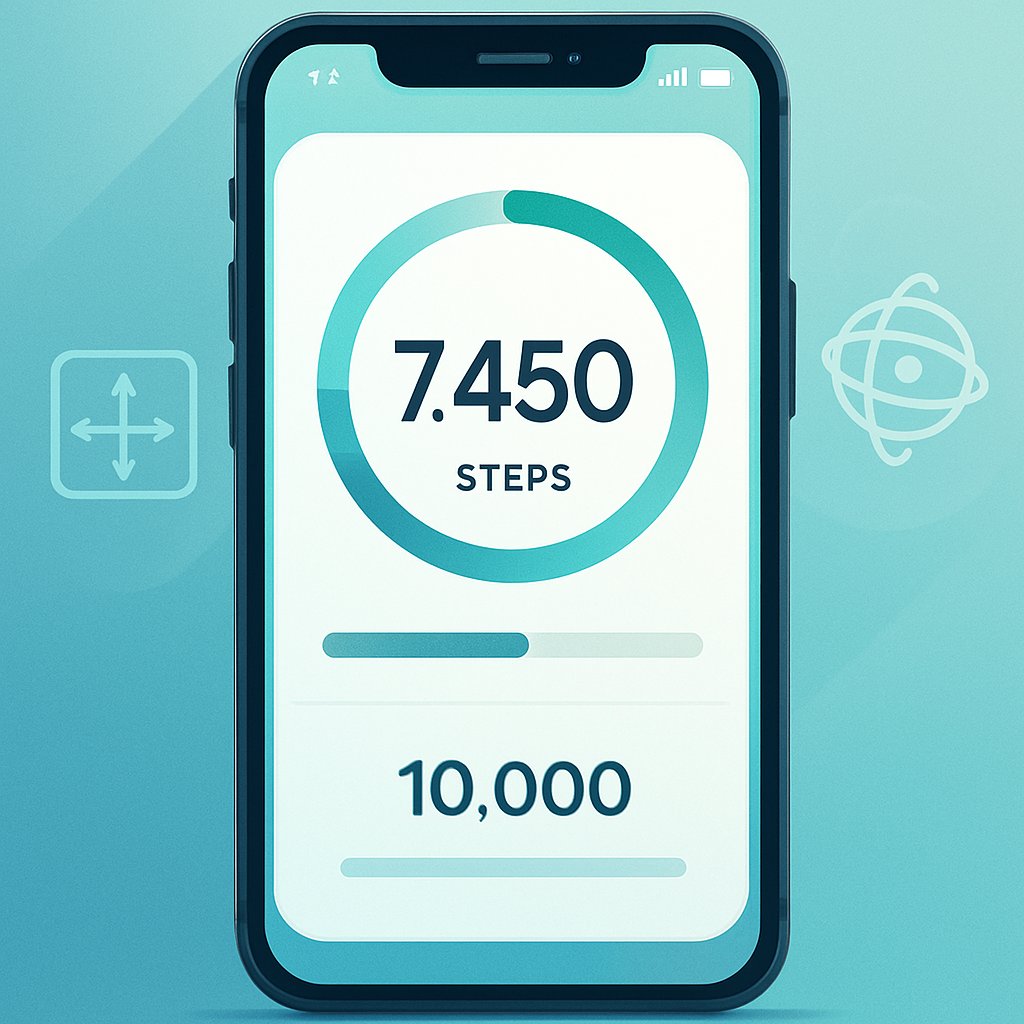The Fitness App is generally accurate for counting steps, but it usually has a margin of error of around 5–10%. This means you can rely on The Fitness App for tracking your daily walking trends and overall activity levels, but the exact number of steps may vary slightly. Knowing how accurate your step counter is can help you set realistic goals, monitor your progress, and get the most from your health journey. In this guide, you’ll learn how The Fitness App measures steps, why discrepancies occur, and how to improve accuracy for better fitness tracking. If you have specific concerns, always check The Fitness App’s official support page.

How Does The Fitness App Track Steps?
The Fitness App Step Counting Algorithm
The Fitness App, like most leading fitness trackers, uses your phone’s built-in accelerometer and gyroscope to detect movement. When you walk, these sensors capture changes in motion and the app’s algorithm analyzes the data to determine whether each movement qualifies as a step.
- Accelerometer: Detects changes in speed and direction.
- Gyroscope: Monitors orientation and rotation.
- Algorithm: Filters out non-walking activities (like shaking or waving) to improve step accuracy.
Pro tip: The more advanced the algorithm, the more accurate the step count!
How Accurate Is The Fitness App for Counting Steps?
Recent Studies & Real-World Data
- General Accuracy: Most smartphone-based step counters, including The Fitness App, report steps with an error margin of around 5–10% (Harvard Health, 2024).
- Independent Research: A 2023 study published in the Journal of Medical Internet Research found that step-counting apps are quite reliable for typical walking activities, especially when the phone is kept in a pocket or worn on the body.
- Wrist vs. Phone Tracking: Wrist-worn devices tend to be slightly more accurate than phone apps, especially for short walks or movements around the house (CDC, 2024).
- Special Cases: The app may underestimate steps if you’re pushing a stroller, carrying heavy bags, or walking slowly.
Factors That Affect Step Counter Accuracy
- Device Position: Keeping your phone in your hand, bag, or pocket all affect accuracy. A pocket or armband is ideal.
- Walking Style: Fast, regular strides are counted best. Short shuffles or slow movements may not register.
- App Updates: Recent updates to The Fitness App (early 2025) have improved step tracking and reduced false positives.
- Profile Calibration: Make sure your height, weight, and stride length are correctly set in the app settings.
Common Accuracy Concerns & Solutions
Why Does The Fitness App Sometimes Over- or Under-Count Steps?
- Non-walking Movements: Vigorous arm swings or shaking your phone might trigger extra steps.
- Phone Placement: Carrying the phone in a loose bag or on a stroller may cause missed steps.
- Battery Optimization: Phones set to aggressive battery-saving modes may restrict sensor activity, leading to undercounting.
How To Improve Your Step Counting Accuracy
- Always keep your phone on your body—ideally in your pocket or armband.
- Calibrate your stride length in the app settings if available.
- Regularly update The Fitness App to the latest version.
- Review and adjust your profile information (height, weight, stride).
- Consider using a wrist-worn device for cross-verification if step count accuracy is critical.
How Does The Fitness App Compare to Other Step Counters?
| Tracker/App | Margin of Error | Best Use Case |
|---|---|---|
| The Fitness App | 5–10% | General fitness & daily steps |
| Apple Health/Watch | 3.7–7% | All-day activity tracking |
| Google Fit | 5–10% | Android users, daily steps |
| Fitbit | 4–7% | Fitness-focused, detailed data |
| Samsung Health | 5–8% | Samsung devices |
Data from Harvard Health & Verywell Fit (2024)
Frequently Asked Questions (FAQ)
1. Can I trust my daily step count on The Fitness App?
Yes, you can trust the daily trend and total activity, but expect a possible ±5–10% difference from your actual steps.
2. Why are my steps not being counted accurately?
Check if your phone is with you, app permissions are set, and background activity is allowed.
3. Does walking with my phone in my hand affect the step count?
Not significantly—modern apps are designed to detect steps regardless of hand or pocket, but keeping it steady in a pocket is most reliable.
4. Is a smartwatch better for counting steps?
Generally yes, especially for continuous, precise tracking and short movements.
Conclusion
The Fitness App is accurate enough for tracking daily steps and activity trends, but it’s normal to see a 5–10% margin of error. For most users, this is more than sufficient for maintaining motivation and setting fitness goals. If you need medical-grade precision, pair your app with a dedicated fitness tracker and keep your device calibrated and up to date. For more tips or troubleshooting, visit The Fitness App Support Center.
Call to Action
Want to make every step count? Download the latest version of The Fitness App, update your profile, and start tracking your fitness journey with confidence! If you’re looking for even more accurate results, consider pairing with a wearable tracker and following the tips in this guide.
